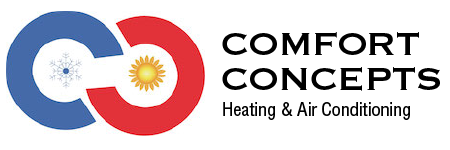
You shouldn’t have to compromise on comfort or drain your wallet to keep your home at a refreshing setting during summer weather.
But what is the ideal setting, exactly? We discuss ideas from energy specialists so you can choose the best temperature for your loved ones.
Here’s what we suggest for the most energy-efficient setting for air conditioning in Yukon.
Recommended Thermostat Settings for Summer
Most households find setting the thermostat at 72-73 degrees is ideal. However, if there’s a major difference between your inside and outdoor temps, your cooling costs will be larger.
These are our recommendations based on the U.S. Department of Energy (DOE) and ENERGY STAR®.
While at home: 78 degrees. While that appears too high, there are ways you can keep your residence pleasant without having the air conditioning on frequently.
Keeping windows and curtains closed during the day keeps chilled air where it needs to be—indoors. Some window treatments, including honeycomb shades or plantation shutters, are created to give more insulation and better energy savings.
If you have ceiling fans in your house, the DOE says you can increase thermostat temps about 4 degrees higher without sacrificing comfort. That’s due to the fact they refresh through a windchill effect. Since they cool people, not spaces, switch them off when you exit a room.
If 78 degrees still appears too warm initially, try running an experiment for about a week. Get started by raising your temperature to 78 degrees while you’re at your house. Then, gradually turn it down while following the suggestions above. You could be shocked at how cool you feel at a higher temperature setting.
While away: 88 degrees. There’s no rationale for keeping the AC on all day while your house is unoccupied. Moving the setting 7–10 degrees warmer can save you as much as 5–15% on your AC expenses, according to the DOE.
When you arrive home, don’t be tempted to put your thermostat below 78 to cool your residence more quickly. This isn’t useful and often produces a higher cooling bill.
A programmable thermostat is a good method to keep your temp under control, but you have to set programs. If you don’t set programs, you run the risk of forgetting to raise the set temperature when you take off.
If you need a handy fix, think about installing a smart thermostat. This thermostat links with your phone, so it is aware when you’re at your house and when you’re away. Then it intuitively modifies temperature settings for the biggest savings. How much exactly? Usually $180 annually on heating and cooling, according to ENERGY STAR.
Another plus of installing a smart thermostat? You can use your phone to keep an eye on and adjust temperature settings from nearly anywhere.
While sleeping: Around 70 degrees. While ENERGY STAR advises 82 degrees, that could be too uncomfortable for the majority of families. Most people sleep better when their sleeping space is chilled, so that’s why the National Sleep Foundation suggests 60–67 degrees. But that may be too chilly, based on your PJ and blanket preference.
We suggest running a similar test over a week, setting your temp higher and progressively turning it down to select the right temp for your house. On cool nights, you may discover keeping windows open at night and using a ceiling fan is a superior idea than using the AC.
More Ways to Save Energy During Warm Weather
There are additional ways you can spend less money on air conditioning bills throughout the summer.
- Install an energy-efficient cooling system. Central air conditioners only are effective for about 12–15 years and get less efficient as they become older. An upgraded air conditioner can keep your home comfier while keeping cooling bills low.
- Book regular air conditioner tune-ups. Annual air conditioner maintenance keeps your unit running like it should and could help it work at greater efficiency. It can also help extend its life expectancy, since it enables technicians to pinpoint small issues before they lead to a major meltdown.
- Put in new air filters often. Follow manufacturer instructions for switching your air filter. A clogged filter can result in your system short cycling, or switch on and off too often, and raise your cooling.
- Measure attic insulation levels. Almost 90% of residences in the USA don’t have adequate insulation, according to the Insulation Institute. Most southern climates need 13–14” of attic insulation, while northern climates require 16–18”.
- Have your ductwork inspected. Ductwork that has come apart over time can let cold air into your attic, walls or crawl space. This can create major comfort troubles in your residence, such as hot and cold spots.
- Seal openings, doors and windows. Keep muggy air where it should be by plugging holes. You can also caulk or weather strip doors to trap more cold air inside.
Save More Energy This Summer with Comfort Concepts Heating & Air Conditioning
If you need to conserve more energy during hot weather, our Comfort Concepts Heating & Air Conditioning pros can help. Reach us at 405-494-7444 or contact us online for extra info about our energy-saving cooling solutions.

